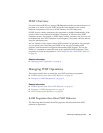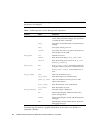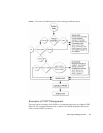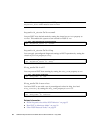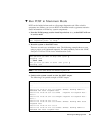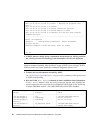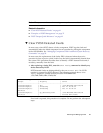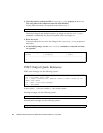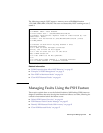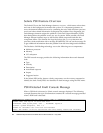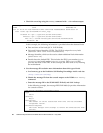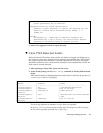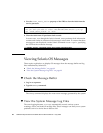
Detecting and Managing Faults 41
Note – The system can boot and run using memory that was not disabled.
Related Information
■ “Clear POST-Detected Faults” on page 41
■ “Examples of POST Management” on page 37
■ “POST Output Quick Reference” on page 42
▼ Clear POST-Detected Faults
In most cases, when POST detects a faulty component, POST logs the fault and
automatically takes the failed component out of operation by placing the component
in the ASR blacklist. See “Managing Components With Automatic System Recovery
Commands” on page 50.
In most cases, the replacement of the faulty FRU is detected when the service
processor is reset or power cycled. In this case, the fault is automatically cleared from
the system. This procedure describes how to identify a POST detected fault and, if
necessary, manually clear the fault.
1. After replacing a faulty FRU, enter the show faulty command to identify any
faults detected by POST.
POST-detected faults are distinguished by the text Forced fail. No UUID
number is reported for POST-detected. The following example shows show
faulty output for a failed memory module in FB-DIMM slot
/SYS/MB/CMP0/BR1/CMP0/D0.
If no fault is reported, this procedure is complete. Do not perform the subsequent
steps.
-> show faulty
Target | Property | Value
----------------------+------------------------+-----------------------------
/SP/faultmgmt/0 | fru | /SYS/MB/CMP0/BR1/CH0/D0
/SP/faultmgmt/0 | timestamp | Dec 21 16:40:56
/SP/faultmgmt/0/ | timestamp | Dec 21 16:40:56
faults/0 | |
/SP/faultmgmt/0/ | sp_detected_fault | /SYS/MB/CMP0/BR1/CH0/D0
faults/0 | | Forced fail(POST)





